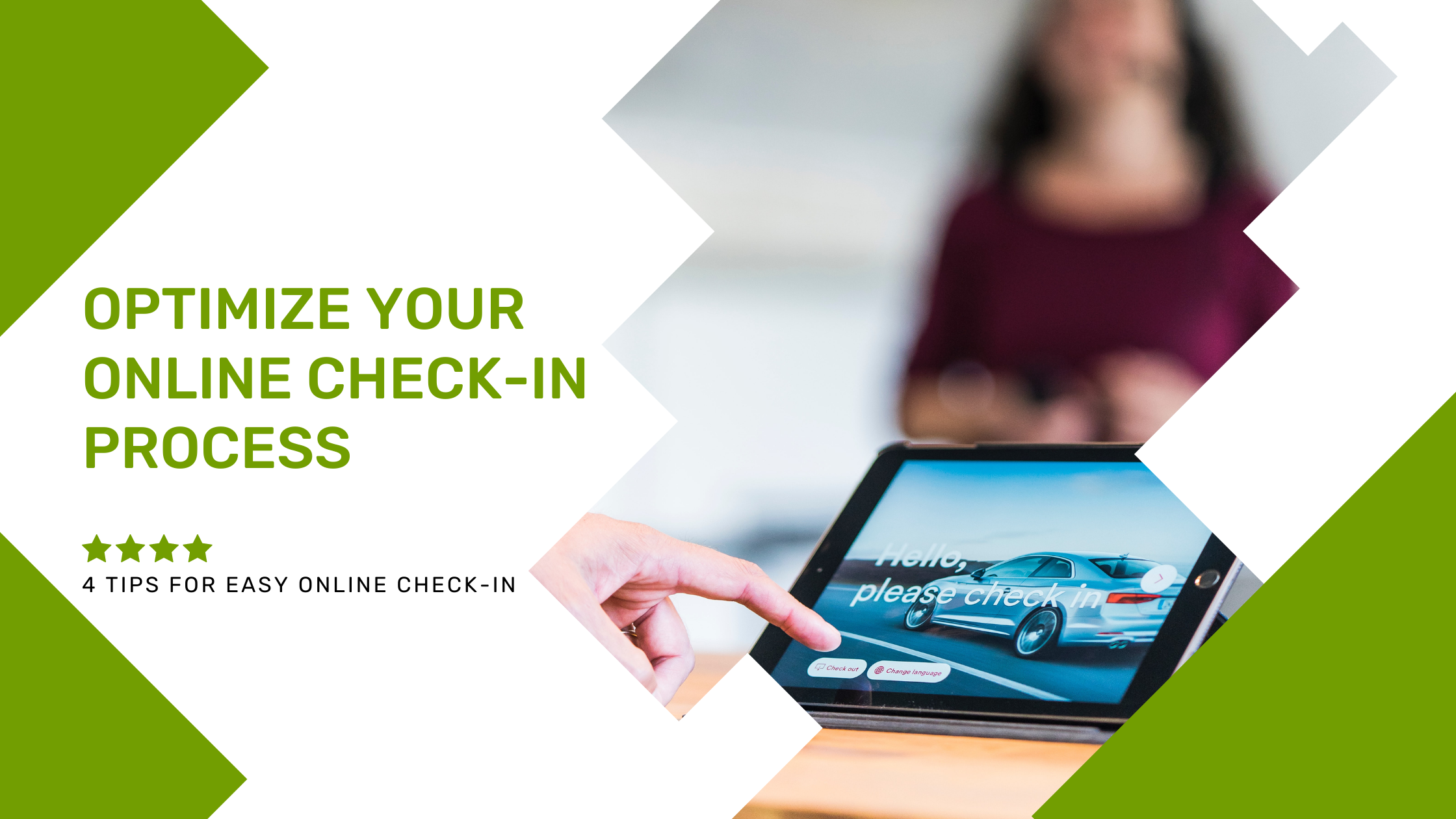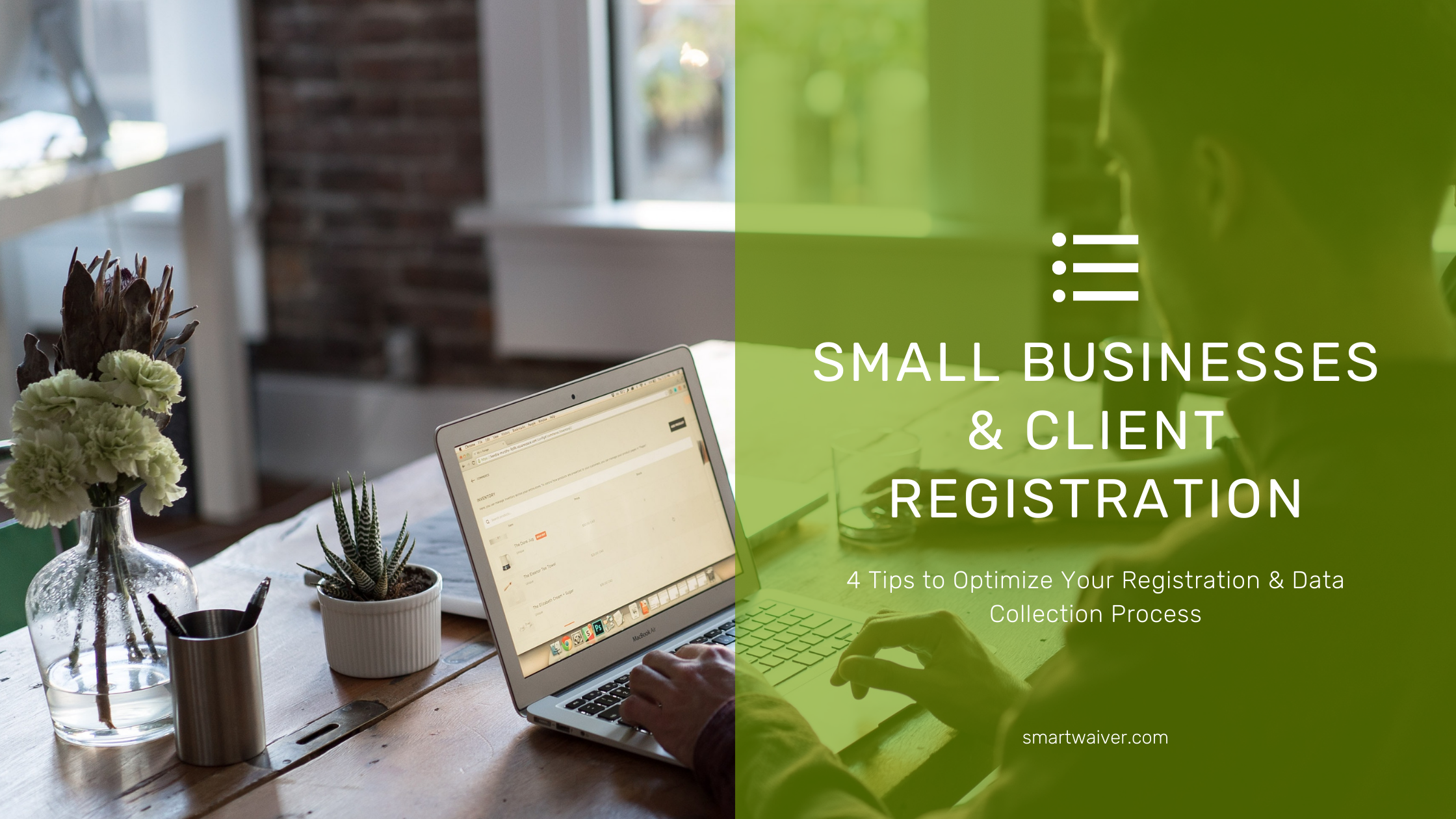4 Tips for Optimizing Your Check-in Process
Your customers’ experience with your organization begins when they register online. As their first direct interaction with your organization outside of encountering marketing materials, your check-in process will shape your customers’ first impressions and can determine whether or not they follow through on submitting their registration form.
If your organization offers online registration for upcoming events, group reservations, or everyday attendance, you can optimize your check-in process to provide additional convenience for your staff and your guests. When leveraged correctly, your check-in process can be far more than a headcount, allowing your organization to gather key data, stay organized, and start your customers’ engagement off on the right foot.
Organizations may vary slightly in their check-in process depending on the industry. Gyms, zoos, museums, and most other organizations can all benefit from following these four tips to improve their online check-in process:
- Build a streamlined registration process.
- Invest in needs-specific software.
- Create a membership program.
- Offer multiple ways to register.
As you read through these tips, consider how you can scale these practices to meet your organization’s needs. Organizations operating from a single location will have different needs than enterprise businesses. However, the right registration tools should grow with your organization, ensuring your business maintains a streamlined check-in process.
1. Build a streamlined registration process.
Whether you need your customers to fill out release forms, dietary restrictions checklists, or simply their contact information, your check-in process can quickly accumulate an increasing number of required information fields.
Creating an optimized registration form is often a balancing act. While there is vital information you need to gather to check-in your guests, you also want to avoid creating an unwieldy check-in process that guests will exit before completing. You can avoid form abandonment and build a streamlined registration process for your visitors online by:
- Asking only necessary questions. Your check-in process is an excellent opportunity to gather information about your guests. However, lengthy registration processes and multi-page forms can quickly turn off otherwise interested guests. Limit your required fields to only require the information that is relevant to your guests’ immediate needs. This is especially useful for organizations that also accept walk-ins, allowing guests to fill out your forms quickly on their phones and get started within a few minutes.
- Making your forms accessible. Make sure your entire audience can easily complete your registration process by following accessibility guidelines. For instance mark required fields in multiple ways using color, symbols, or even the word “required” in your instructions. Also, provide directions for your information fields that are outside of each box ensuring the instructions will not disappear when your guests start typing.
- Providing additional engagement opportunities without requiring data re-entry. Some organizations may have additional opportunities guests may want to engage with upon registration. This includes donating, buying merchandise, and signing up for memberships and add-ons. Allow guests to add these opportunities to their registration cart without re-entering their payment information.
Additionally, don’t forget to optimize your online registration process for multiple devices. Guests should be able to access your registration forms on their home computers, phones, tablets, and your on-site terminals without issue. Many organizations also find it useful to provide guests with emailed barcodes they can open on their phones to scan at your organization’s entrance so they can get started without delay.
2. Invest in needs-specific software.
As mentioned, some organizations have unique requirements for their check-in process that generic registration software may not account for. Fortunately, there are a variety of business and industry-specific registration software solutions that businesses can invest in to find the right check-in process without compromising their needs.
As you browse through your options, look for needs-specific software related to key check-in processes such as:
- Waivers. Whether you’re running an adventure park, a gym, or an animal training class, you will likely need waivers specific to the risks relevant to your business. Business-specific waiver software will help you find templates and edit your release forms to match your business’s needs. Then, you can keep your customers’ waivers on file for the next time they return to your business.
- Ticketing. Tickets allow your organization to monitor your daily attendance totals, reserve spots, and otherwise control how many customers you need to manage at a time. Doubleknot’s guide to zoo ticketing software walks through how a specific industry can benefit from using software that accounts for unique challenges and opportunities. For example, zoos experiencing long lines can use effective ticketing software to create pop-up ticketing booths, allowing staff to process more guests electronically, increasing the speed of every line.
- Client registration. Some businesses may require customers to create profiles and accounts when they register. For example, summer camps will likely need software dedicated to organizing a variety of details about campers, such as dietary restrictions, allergies, vaccination records, and emergency contact information.
Be sure to research your options thoroughly and investigate how industry-specific software will cater to your business. Account for other factors in your registration software, as well, such as long-term technical support, onboarding, and pricing model.
3. Create a membership program.
If your organization wants to inspire repeat visitors, consider setting up a membership program. Doing so will reduce data re-entry for your customers by letting them register once and receiving access to your organization for a month, year, or set number of visits. In addition, creating a membership program can also provide the following benefits to your customers and your organization:
- Personalized experiences. The right membership software will allow your business to track customer data and tailor your interactions with them to fit their preferences. For example, your messaging tools should allow you to create unique email streams for your members based on their history with your organization and their preferred services.
- Member-specific benefits. You can incentivize customers to join your membership program by offering exclusive benefits, such as discounted ticket prices or priority access to limited services, shows, and exhibits.
- Automatic membership renewal. Customers who intend to continue their relationship with your business past your membership’s expiration date can sign-up for automatic renewal to prevent service interruptions. Be sure your membership software features can support recurring billing and are equipped to provide customers with the necessary receipts and other financial documentation to stay informed about their membership.
While some businesses like gyms may default to using a dedicated membership model, other organizations can reap the same benefits, retaining customer loyalty and incentivizing return visits by offering a membership program. Conduct an internal review of your own services and determine what added benefits you can offer returning customers and how you can turn that into a membership program.
4. Offer multiple ways to register.
Be mindful of your guests’ registration preferences and technological limitations. Many of your guests are likely to fill out your registration forms from their mobile devices while on-the-go, whereas others may need access to an on-site kiosk or paper forms to register at your organization itself.
Your website should be the primary tool customers can use to register online. As Morweb’s guide to building a membership website explains, your website’s design and layout will impact how visitors are guided through your registration and check-in processes. Make sure your navigation provides clear directions to your registration forms and your check-in process accepts multiple forms of payment.
Along with allowing guests to register through your website, make sure guests can also register online at your organization. Doing so will allow you to accommodate walk-ins, who can either use their phones or provided terminals to fill out the same forms as those who booked ahead.
Make sure that your website also provides opportunities for customers to get help or additional information about their specific check-in needs. For example, more complicated bookings, such as large parties whose leaders want to reserve a space for a set period of time, may require more help checking in all of their members online. In this case, it might make sense to direct them to your help desk’s contact information so they can talk through the check-in process with someone knowledgeable about your organization.
While checking in may not be the most exciting part of your business, optimizing your online registration process ensures that your customers start their engagement with a positive first impression. Make sure to streamline your registration process by offering multiple ways for guests to sign up. Also, research your check-in software options to find a solution that will provide added convenience for your team and your guests.
This blog post was contributed by Doubleknot.
Elissa K. Miller, M.Ed. is Doubleknot’s Communications Director. As the former development director for a regional nonprofit, she’s passionate about helping nonprofits and youth-serving organizations harness new technologies to streamline operations and support their missions.




